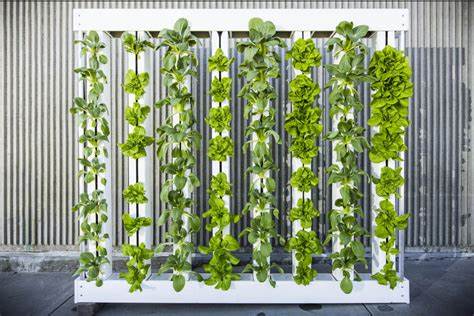
Vertical Farming: Maximizing Crop Yield and Economic Growth
Introduction
Vertical farming is a revolutionary agricultural practice that involves growing crops in vertically stacked layers, utilizing indoor environments such as warehouses or skyscrapers. This method of farming has gained significant attention in recent years due to its potential to address various social and economic challenges. By maximizing land use and crop output, vertical farming has the potential to increase food production and alleviate food scarcity. Moreover, its resource-efficient and environmentally sustainable practices make it an attractive option for the future of agriculture.
Historical Background
The concept of vertical farming can be traced back to the hanging gardens of Babylon, one of the Seven Wonders of the Ancient World. However, modern vertical farming practices have evolved significantly over time. With the advancements in technology and understanding of plant biology, vertical farming has become more efficient and scalable.
Key Concepts and Definitions
Vertical farming involves cultivating plants in vertically stacked layers, using techniques such as hydroponics, aeroponics, and aquaponics. Hydroponics refers to the method of growing plants without soil, using nutrient-rich water solutions. Aeroponics involves suspending plant roots in the air and misting them with nutrient solutions. Aquaponics combines hydroponics and aquaculture, where fish waste provides nutrients for the plants.
Main Discussion Points
Point: Increased crop yield and food production
Vertical farming maximizes land use by utilizing vertical space, allowing for multiple layers of crops to be grown in a single structure. This significantly increases crop yield and food production compared to traditional farming methods. Additionally, vertical farming offers the potential to address food scarcity and feed growing populations by producing more food in a limited space.
Point: Environmental sustainability and resource efficiency
Vertical farming reduces water usage by utilizing recirculating systems that conserve and reuse water. It also minimizes land degradation by eliminating the need for large-scale land clearing. Furthermore, vertical farming has the potential to reduce pesticide and fertilizer use through controlled environments and integrated pest management practices.
Point: Job creation and economic growth
Vertical farming creates employment opportunities in various sectors, including agriculture, technology, and logistics. The establishment of vertical farms can lead to local economic development by attracting investment and generating revenue. Additionally, the production of fresh and locally grown produce can boost the agricultural sector and create a new market for urban areas.
Point: Improved food security and access
Vertical farming brings fresh produce closer to urban areas, reducing the distance between farms and consumers. This enables urban dwellers to access locally grown, nutritious food, thereby reducing food deserts and improving overall nutrition. The ability to grow crops year-round in controlled environments also ensures a consistent food supply.
Case Studies or Examples
Case study: The Plant, Chicago
The Plant is a vertical farming initiative in Chicago that combines urban agriculture, sustainable food production, and innovative energy solutions. By repurposing an old meatpacking facility, The Plant has created a closed-loop system where waste from one process becomes a resource for another. This model has not only revitalized the neighborhood but also created jobs and promoted sustainable practices.
Case study: Sky Greens, Singapore
Sky Greens is a vertical farming system in Singapore that uses rotating towers to maximize sunlight exposure and improve crop yield. This innovative approach has gained recognition for its scalability and efficient use of space. Sky Greens’ model has the potential to transform urban farming and contribute to Singapore’s food security goals.
Current Trends or Developments
Recent research has highlighted the social and economic benefits of vertical farming. Studies have shown that vertical farming can significantly reduce water consumption compared to traditional agriculture. Technological advancements, such as the use of artificial intelligence and automation, are further improving the efficiency and productivity of vertical farming practices.
Challenges or Controversies
Addressing concerns about the energy consumption and carbon footprints of vertical farming is crucial. While vertical farming can reduce resource use, the energy requirements for lighting, heating, and cooling must be carefully managed to minimize environmental impacts. Additionally, the economic feasibility and scalability of vertical farming have been subject to debate. The high initial investment costs and operational expenses pose challenges for widespread adoption.
Future Outlook
The future of vertical farming looks promising, with the potential for substantial growth and expansion worldwide. As urban populations continue to grow, the integration of vertical farming into urban planning and sustainability initiatives will become increasingly important. By incorporating vertical farming into buildings and urban landscapes, cities can enhance food security, promote local economies, and reduce environmental footprints.
Conclusion
Vertical farming offers a compelling solution to the social and economic challenges faced by traditional agriculture. Through increased crop yield and food production, environmental sustainability, job creation, and improved food security, this innovative approach has the potential to transform the future of farming. Embracing vertical farming can pave the way for a more sustainable and resilient food system.
References
Despommier, D. (2010). The vertical farm: feeding the world in the 21st century. Picador.
Gómez, C., & Martínez, M. (2020). Vertical farming: An innovative and sustainable agricultural practice. Sustainability, 12(20), 8374.
Singh, S. K. (2021). Vertical farming: A sustainable and innovative approach towards food security. Ecological Indicators, 130, 108087.